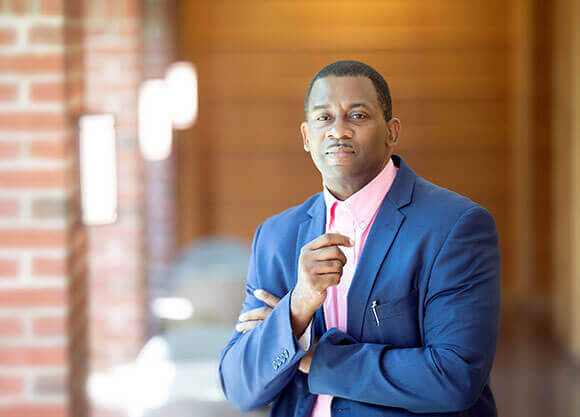
Understanding urban crime’s root causes
March 31, 2021

March 31, 2021

Turé followed in their footsteps, spending five years as a metropolitan police officer in Georgia. He later trained police recruits on implicit bias and stereotypes, opening their eyes to the cultural misconceptions they held about the communities they’d be policing.
“I wanted to teach them to be better officers and better community partners,” Turé said. “If they’re trained to see certain people as threats, that’s how they’ll treat them.”
Today, he opens eyes as a teacher at Quinnipiac. An urban ethnographer, Turé specializes in the intersection of race and place with policing in urban environments, as well as forms of structural inequality that exist there. He wants his students to analyze and understand how individuals in law enforcement—or any field—can be socialized and professionalized to see certain people, places and things in a particular way.
“I can’t convince students that these aren’t issues of pathological culture unless they come out and see it,” Turé said.
He frequently takes his classes into the field to dispel what he calls the “Hollywood construction” of urban crime. His students have gone on police ride-alongs, observed courtroom cases and sat in on intervention circles and counseling sessions. Turé hopes these experiences broaden their perspectives on the day-to-day realities faced by people of all races, ethnicities and ages in urban communities.
“I don’t give my students knowledge for the sake of knowledge, but to be part of change,” he said. “We need professionals going into the criminal justice system who understand we can’t arrest, convict and incarcerate our way out of urban crime.”
Quinnipiac Today is your source for what's happening throughout #BobcatNation. Sign up for our weekly email newsletter to be among the first to know about news, events and members of our Bobcat family who are making a positive difference in our world.
Sign Up Now